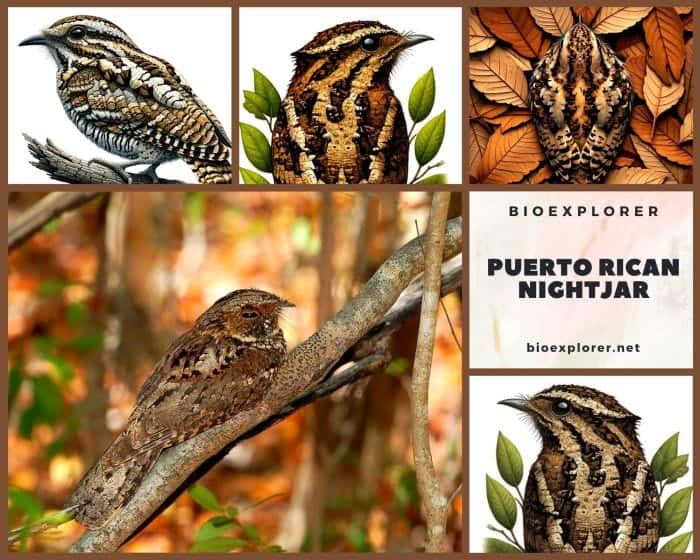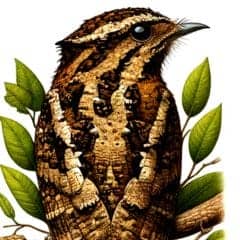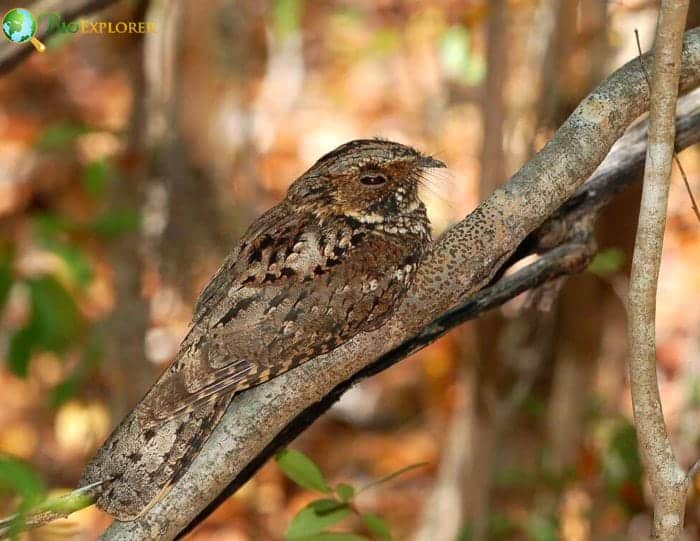
| Animalia | Caprimulgiformes | Caprimulgidae | Antrostomus | Antrostomus noctitherus |
The Puerto Rican Nightjar (Antrostomus noctitherus) is an elusive 22-23 cm ground-nesting bird found only in dry, coastal forests of southwest Puerto Rico. Numbering just 1,400 to 2,000 mature individuals, this nocturnal insectivore is classified as Endangered.


- Common Name(s): Puerto Rican Nightjar
- Family: Caprimulgidae
- Body Dimensions: 22–23 cm
- Male Plumage Color(s): Black throat with thin white line
- Female Plumage Color(s): Buff throat
- Habitat: Coastal Dry Forests of Puerto Rico
- Diet: Insects
- Native Countries: Puerto Rico
- Continent(s): North America
- Taxonomy Classification Year: 1919
- Taxonomist(s): Frank Alexander Wetmore
Puerto Rican Nightjar Facts

- Rediscovered in 1961 after only bones and a single 1888 specimen were previously known, the Puerto Rican Nightjar remains extremely localized.
- Its cryptic brown, black, and gray plumage provides camouflage as it rests on leaf litter during the day before taking wing at dusk. Distinctive white tail spots and males’ black throats with thin white lines aid dim identification[1].
- Nesting peaks April-June directly on the ground beneath dense canopies. The Puerto Rican Nightjar lays just 1-2 light brown eggs mottled with darker patches.
- Chicks hatch after 18-20 days and can fly at 2 weeks old. Like many ground-nesters, adults actively distract potential predators.
- Habitat loss from development and agriculture likely extinguished the species from the former northern range. Continued urbanization and farming in southwestern Puerto Rico threaten the remaining dry coastal habitat.
- Introduced predators, including small Indian mongooses and feral cats, further jeopardize the Puerto Rican Nightjar’s limited breeding sites and juvenile birds.
Suggested Reading: Great-eared Nightjar
Conservation actions such as expanding protected forests, controlling public access during breeding months, and managing non-native predators could stabilize this Endangered species.
However, with an extremely localized population estimated as stable yet still small, the cryptic Puerto Rican Nightjar remains vulnerable to extinction, especially from habitat destruction in its southwest Puerto Rico strongholds.
Suggested Reading: Endemic Birds of Puerto Rico
Cite This Page
APA7MLA8Chicago
BioExplorer.net. (2025, December 24). Puerto Rican Nightjar. Bio Explorer. https://www.bioexplorer.net/animals/birds/puerto-rican-nightjar/.
BioExplorer.net. "Puerto Rican Nightjar" Bio Explorer, 24 December 2025, https://www.bioexplorer.net/animals/birds/puerto-rican-nightjar/.
BioExplorer.net. "Puerto Rican Nightjar" Bio Explorer, December 24 2025. https://www.bioexplorer.net/animals/birds/puerto-rican-nightjar/.











